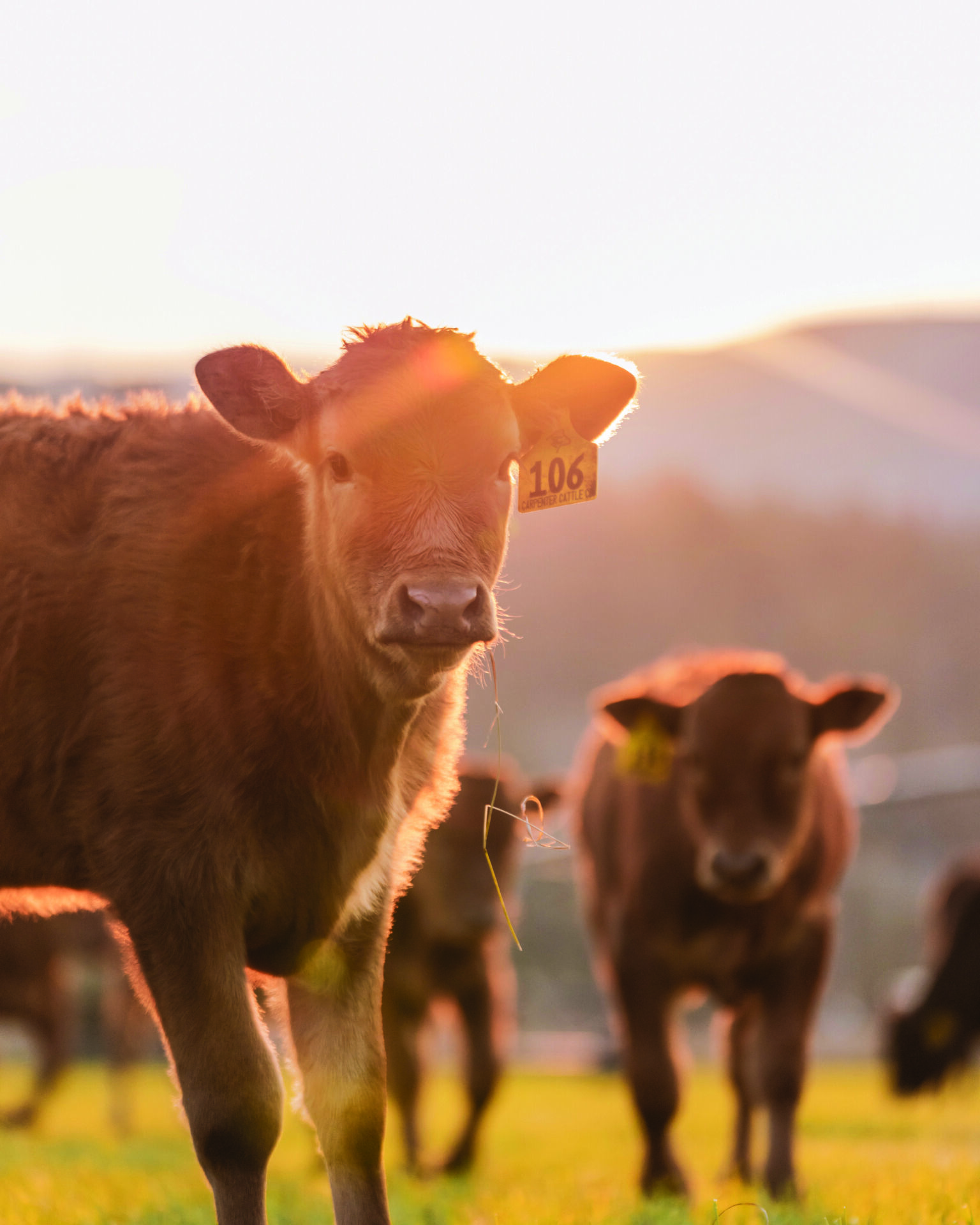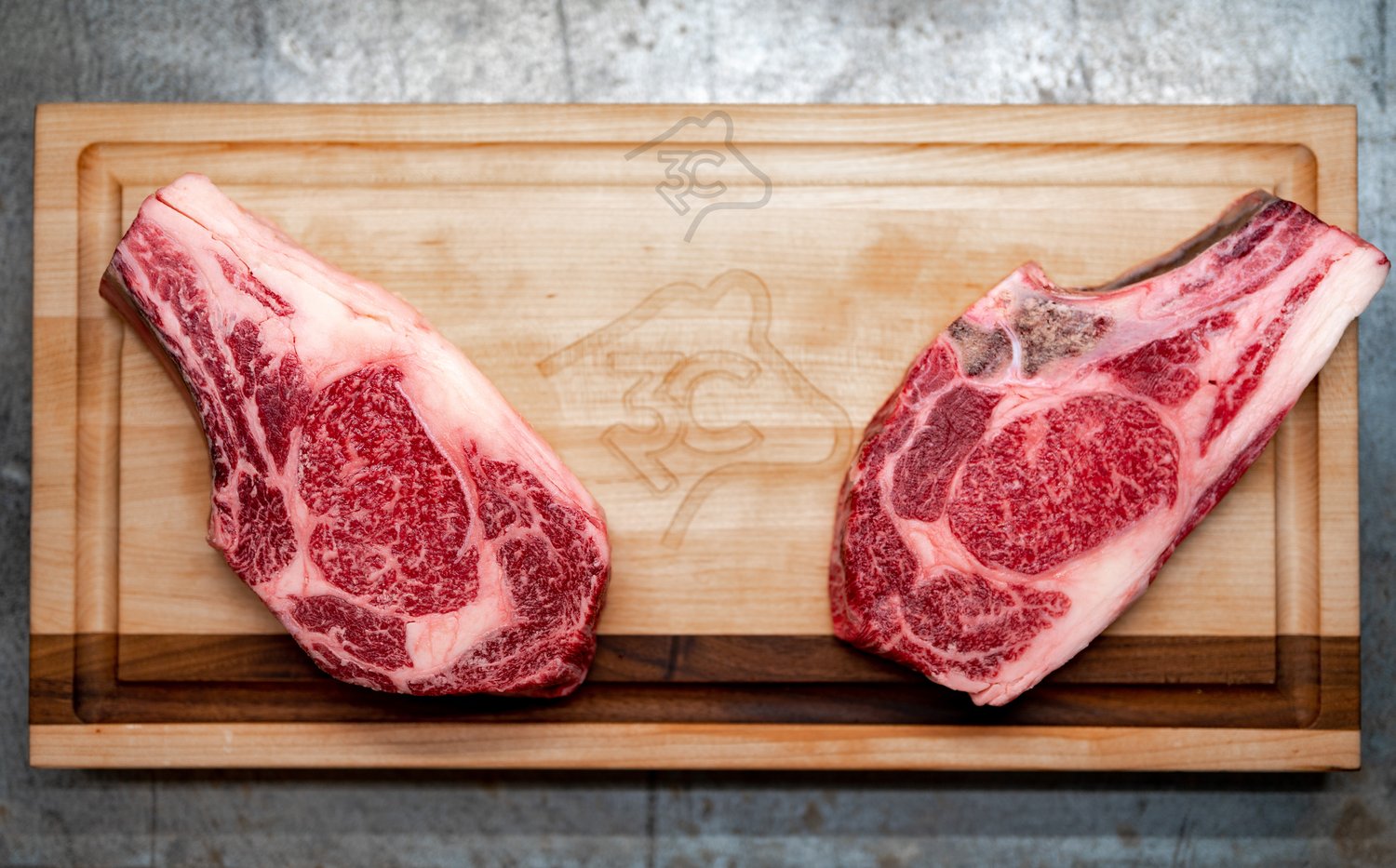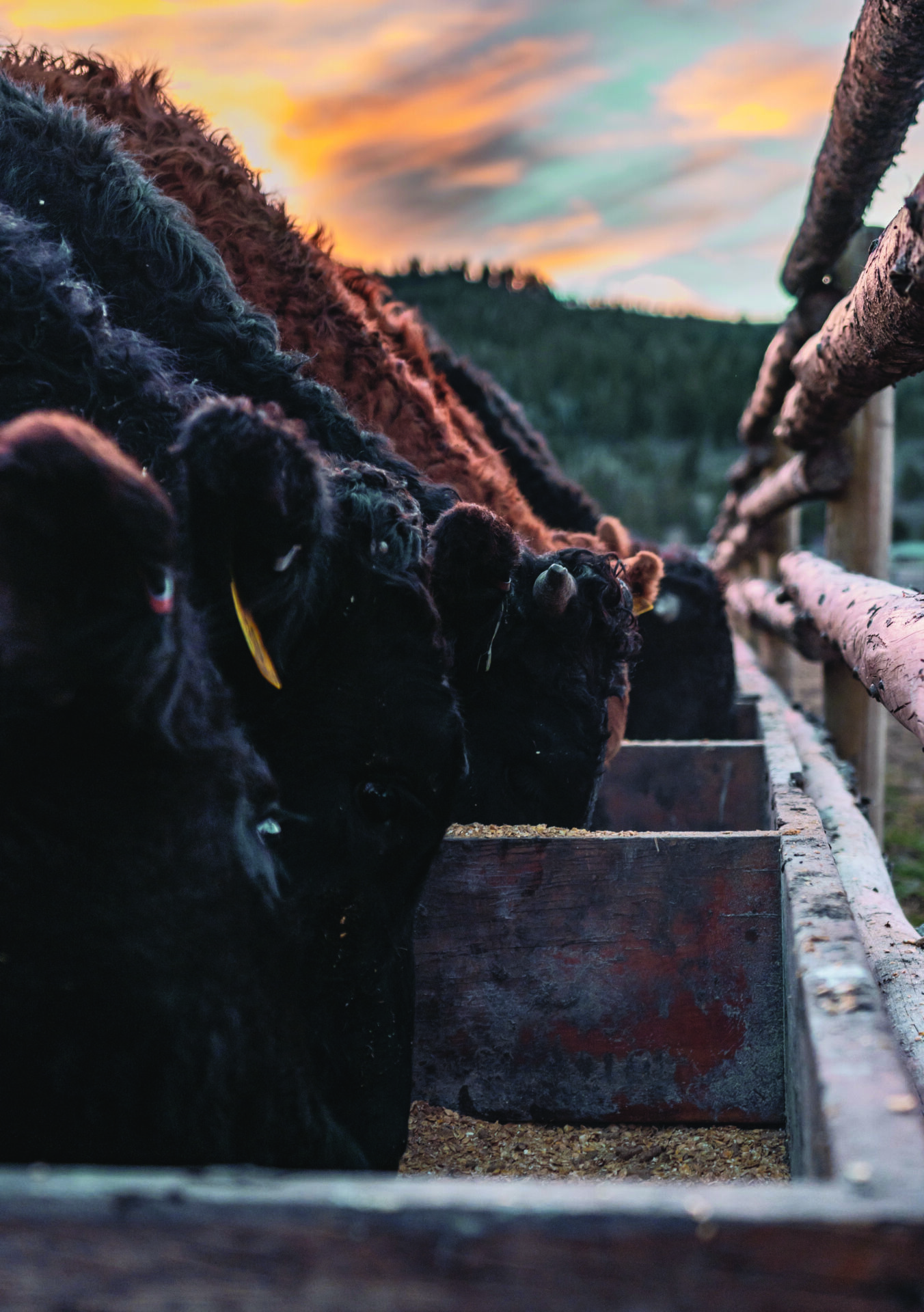Read The
Current Issue
Wyoming Wagyu
A species of Japanese cattle calls Jackson Hole home.

// By Jim Mahaffie
When wagyu beef—literally “Japanese cow”—appears on restaurant menus or at a local market, you might try it for a special occasion or to sample something different. Grilled, roasted, or seared, you can taste the tender texture and buttery beef flavor immediately. That’s what happened for Colby Carpenter, a former longhorn cattleman in Texas. Curious, he cooked some wagyu tomahawk steaks over charcoal and was an immediate convert. In 2019 he and his father, Scott, moved Carpenter Cattle Co. to the Jackson area to raise and sell the choice beef.
“Several unique opportunities combined into one big move,” says Carpenter about why they did wagyu in Wyoming instead of staying in Texas. “No one was producing full-blood wagyu in Teton County. We found the perfect ranch property. My sister was a Sotheby’s agent in Jackson, and my wife is originally from Cody. Plus, the mountain climate here is similar to the Japanese highlands where wagyu cattle thrive.”
In Japan, there are four breeds of wagyu: Japanese black, Japanese brown, Japanese shorthorn, and Japanese polled. Until the early 20th century, these breeds were draft animals and not prized beef. Black, brown, and polled wagyu were certified as indigenous Japanese beef in 1944; Japanese shorthorn wagyu received that certification in 1957. Japan today restricts exports of wagyu—only black and brown are available outside the country—and has declared wagyu a national treasure. Black and brown wagyu cattle were first imported to the U.S. by researchers in 1976; today there are still less than 6,000 purebred wagyu cattle across the country. Breeders and ranchers work closely with the American Wagyu Association, based in Post Falls, Idaho, which registers wagyu stock and promotes the breed.
Wagyu differs from other beef because it has intramuscular fat that’s marbled throughout the muscle. In other cattle breeds, the fat collects in a layer around muscle.
Carpenter Cattle began with 15 purebred wagyu cows and two bulls purchased from one of the U.S.’s early wagyu pioneers, Garth Monroe of Idaho Wagyu Genetics. Years ago, Monroe built a herd of full-blood wagyu with excellent genetics. Today the herd at the Carpenter Cattle ranch just east of Hoback Junction is about 80 head, all of which are 100 percent full-blooded wagyu. “Our genetic lines trace directly to purebred Japanese sires and dams,” Carpenter says. This is an important distinction. What’s labeled as “American Wagyu” may be wagyu that was crossbred with other breeds like Angus and Holstein. Besides that incredible fat marbling and the taste, desirable wagyu characteristics include calving ease for young heifers, fertility, adaptability to various environments, and calf marketability.
Carpenter sells his beef locally at Jackson’s Sweet Cheeks Meats and ships to private chefs and discerning diners all over the country, taking orders through a website (carpentercattle.com) and social media. “Many people are interested in wagyu, and we’re selling to foodies, neighbors, and anyone interested in trying something new. Once you taste it, it’s over,” he says.
At Sweet Cheeks, Carpenter Cattle wagyu starts at $55 per pound; choice cuts like filet mignon and ribeye can run more than $100 per pound. “People around here are used to paying for quality,” says Nick Phillips, who, with wife, Nora, owns the butcher shop. “Like a really good mountain bike or pair of resort skis, you want to buy the best beef there is.”

Not only does wagyu taste different from other species of cattle, it’s also healthier for you.
It contains a higher percentage of omega-3 and omega-6 fatty acids than beef from other breeds, such as Angus and Hereford. It also has a higher percentage of monounsaturated to saturated fat, and almost half the saturated fat is in stearic acid, which doesn’t raise cholesterol levels. In fact, wagyu has the lowest cholesterol levels of all meats—including fish or chicken.
Green Dragon Steak
Dave Yasuda, director of marketing at Snake River Farms, which began crossbreeding high-ranking (for their marbling) wagyu bulls imported from Japan with high-quality American cattle in the late 1980s—essentially creating a new breed, but that’s
another story—says this flank steak recipe for wagyu is “very simple and foolproof, but a big crowd pleaser.” (Read Snake River Farms’ story, and find additional recipes, at snakeriverfarms.com.)
INGREDIENTS:
1 wagyu black grade flank steak (usually about 2 pound. average weight)
Grapeseed oil
1 bunch green onions, green portion chopped into 1/8-inch slices
2 tablespoons toasted sesame seeds
Kosher salt
Black pepper
SAUCE:
1/2 cup soy sauce
1/4 cup water
1/4 cup mirin (Japanese rice wine)
2 tablespoons brown sugar
1/3 cup cane sugar
2 garlic cloves, minced
1 tablespoon grated fresh ginger
Red chili flakes to taste
DIRECTIONS:
1. Trim excess fat or silver skin; season meat with kosher salt and fresh cracked pepper on both sides.
2. Heat oven to 350°.
3. Heat cast iron skillet over medium-high heat. Add a tablespoon of grapeseed oil and allow to heat.
4. Sear the steak on each side for 3 to 4 minutes, setting up a nice golden-brown crust.
5. Place skillet and steak in oven for about 10 minutes; flip the steak over after 5 minutes. Remove from oven when the steak’s internal temp is 130° (even if this takes longer than 10 minutes).
6. From the oven, put the steak on a cutting board and loosely wrap with foil.
7. Let the steak rest for 15 minutes.
8. Whisk sauce ingredients together in a serving bowl.
9. Remove foil, slice the steak against the grain, and arrange on a platter. Top with sauce. Sprinkle with green onions and toasted sesame seeds. JH





